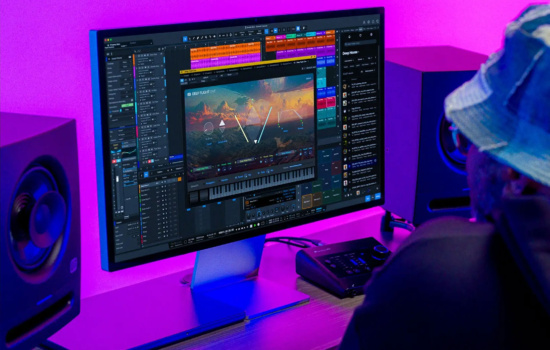Usually known for their high-end audio interface, MOTU has pulled some of the key features and their expertise across to a pair of budget audio interfaces that raise the bar on what home studios should expect from their gear.
They are a good size, made of metal with the usual ins and outs you find on a 2 in/out and 4 in/out budget interface. But there are a few added features that make all the difference.
First of all, that display is gorgeous. On most interfaces, you’re lucky to get a clip light, whereas here you can actually see the level coming in and going out and use it to properly adjust the gain. Both mic preamps have individual +48v phantom power switches which are unusual on interfaces at this level. So you can power a condenser mic on one input and use an unpowered dynamic on the other.
They also have individual monitoring buttons so you can mix and match between direct and software monitoring — direct on your voice while your guitar goes through a software amplifier.
The sound quality, headroom, and dynamic range are excellent up to 192kHz. The latency is also very low and performs brilliantly. There’s an extra feature in the driver which creates a virtual loopback function where you can record the output of your software straight back in again. This is perfect for podcasters and video streaming. And to round it all off the outputs are DC coupled so you can route CV out to modular synthesizers.
The M2 and M4 are very capable interfaces with a great feature set that beats most other interfaces on the market. The M6 adds to the M-Series range by offering 4 solid mic preamps plus some line level action which gives you the room to record more voices, more instruments and be more versatile. Also, with all the connections on the back you suffer less from that annoying cable-drag on the front. The M6 enjoys a second headphone output and the ability to monitor inputs while the computer’s off.
Pros & Cons
- Cool, calm and collected
- High quality boxes for a reasonable price
- Great level display
- Loopback for internal recording
- DC Coupled outputs
- Fiddly hardware format
- Nothing else to report
Street Prices:
MOTU M2 – $199
MOTU M4 – $269
MOTU M6 – $399
motu.com


